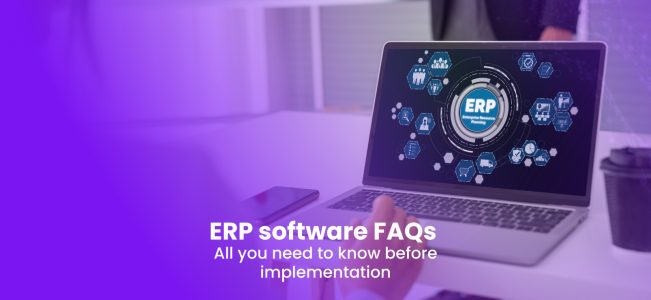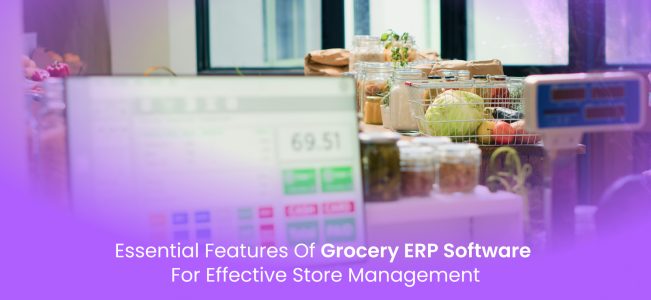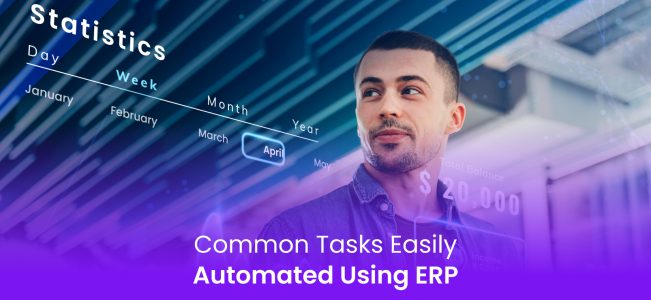Common Supply Chain Challenges Solved by ERP Software
In the dynamic and irregular business landscape of the present times, supply chain efficiency has become more crucial than ever. Whether you’re a manufacturer or a distributor, handling supply chain operations effortlessly is necessary to meet customer requirements, decrease costs, and stay competitive. However, supply chain management comes with its fair share of challenges, ranging from inventory issues to compliance headaches and data inaccuracies.
That’s where Enterprise Resource Planning (ERP) software steps in. A well-designed ERP system helps businesses overcome common supply chain complications by combining processes and data into a single, integrated platform. Let’s explore three major supply chain challenges and how ERP software can efficiently solve them.
Challenge 1: Inventory Management Issues
One of the most common challenges in supply chain management is maintaining the right balance in inventory. Holding too much stock could result in increased storage costs and waste, while stock shortages can lead to overdue orders and lost customers. Striking that balance is often challenging, given the unpredictable market trends, evolving demand, and external factors such as economic shifts or global events (as seen during the COVID-19 pandemic).
How ERP Helps?
An ERP system prepared with an integrated Warehouse Management System (WMS) provides businesses with real-time transparency into their inventory across numerous locations. It automates key inventory functions such as order fulfillment, receiving, and stock transfers, making it effortless to maintain optimal inventory levels. Forecasting tools within ERP software use historical data, trends, and even customer behavior to help businesses plan more precisely and avoid both overstocking and stockouts.
Challenge 2: Data Errors and Inefficiencies
Many businesses still depend on separate software systems and manual spreadsheets to handle different aspects of their supply chain. While this might work in the short term, it usually leads to data duplication, human errors, reporting delays, and inefficient workflows. When departments work in silos, teams struggle to get the complete picture, which slows down decision-making and impacts the bottom line.
How ERP Helps?
One of the major strengths of ERP software is its capability to bring all business functions, inventory, sales, HR, accounting, procurement, and more, under one roof. This centralized database excludes the requirement for repetitive data entry and ensures that everyone is working with the most precise, up-to-date information.
Additionally, ERP systems offer real-time dashboards, customizable reports, and data analytics tools that enhance visibility and enable businesses to make quicker, more informed decisions. By simplifying data flow and decreasing manual tasks, ERP software frees up useful time and resources for revenue-generating activities.
Challenge 3: Meeting Compliance Requirements
Regulatory compliance is another crucial issue in the supply chain, specifically for manufacturers and distributors operating in highly regulated industries such as food, pharmaceuticals, or chemicals. Failure to comply with industry standards can result in heavy fines, legal concerns, and damage to reputation.
For smaller businesses, compliance can be mainly daunting due to the restricted resources and a lack of automated tools to track regulatory changes and preserve necessary records.
How ERP Helps?
Modern ERP systems come equipped with integrated compliance management tools that help businesses maintain traceability, accurate documentation, audit trails, and automated reporting. These features make it easier to adapt to changing regulations. By centralizing and securing data, ERP systems log every transaction, material flow, and process step, ensuring that companies are always prepared for audits.
With features like real-time alerts, version control, and digital document storage, an ERP system considerably lessens the risk of human error and non-compliance.
The Bigger Picture: The Reason an ERP is Crucial for Supply Chain Success
While each of these challenges, inventory mismanagement, compliance risks, and data inefficiencies, might seem distinct, they are all signs of fragmented systems and out-of-date processes. ERP software addresses these concerns by providing a unified, automated, and intelligent platform that improves every aspect of the supply chain.
As supply chains continue to evolve with new technologies such as AI, IoT, and predictive analytics, having a scalable ERP solution becomes even more crucial. Businesses that implement ERP systems position themselves to adjust quicker to market changes, handle risks more efficiently, and deliver improved customer experiences.
Final Thoughts
If you are still dealing with disconnected systems and manual processes, consider how an ERP system could revolutionize your supply chain operations. With features like integrated WMS, compliance tools, real-time data access, and automated workflows, ERP software helps manufacturers and distributors not just continue but prosper in today’s intricate supply chain setting.
How Can CERP Suite Help?
CERP Suite strengthens businesses to overcome common supply chain challenges by delivering a unified, intelligent, and completely customizable ERP platform personalized to their needs. With advanced modules such as the Inventory Management System, Supply Chain Management System, and Accounting Management System, CERP Suite offers real-time transparency, automated workflows, and accurate demand planning, all significant for eradicating inventory mismanagement, ensuring compliance, and reducing data inadequacies. As a leading ERP software, CERP Suite allows manufacturers and distributors to simplify operations, improve decision-making, and adapt rapidly in today’s dynamic market setting.












